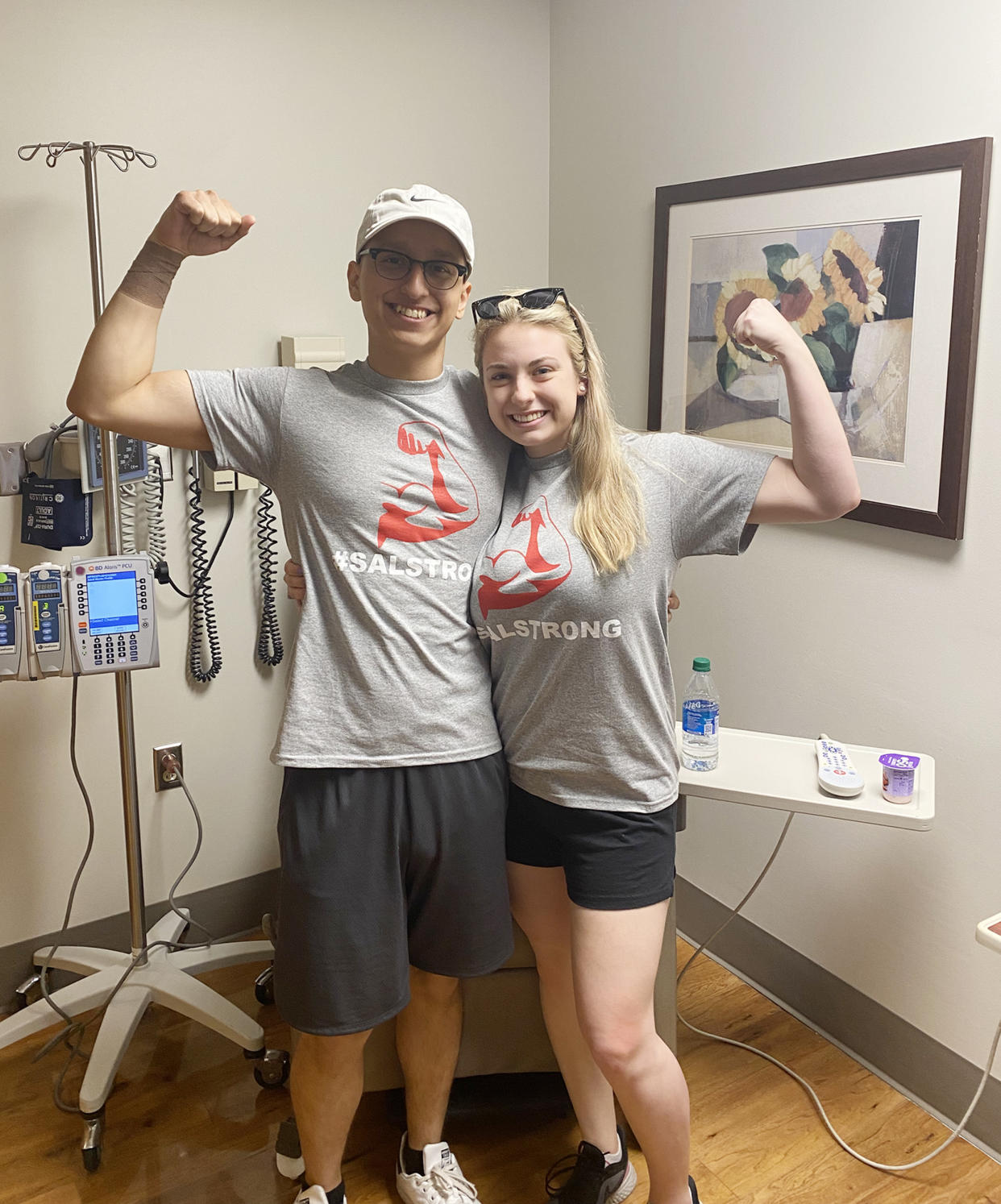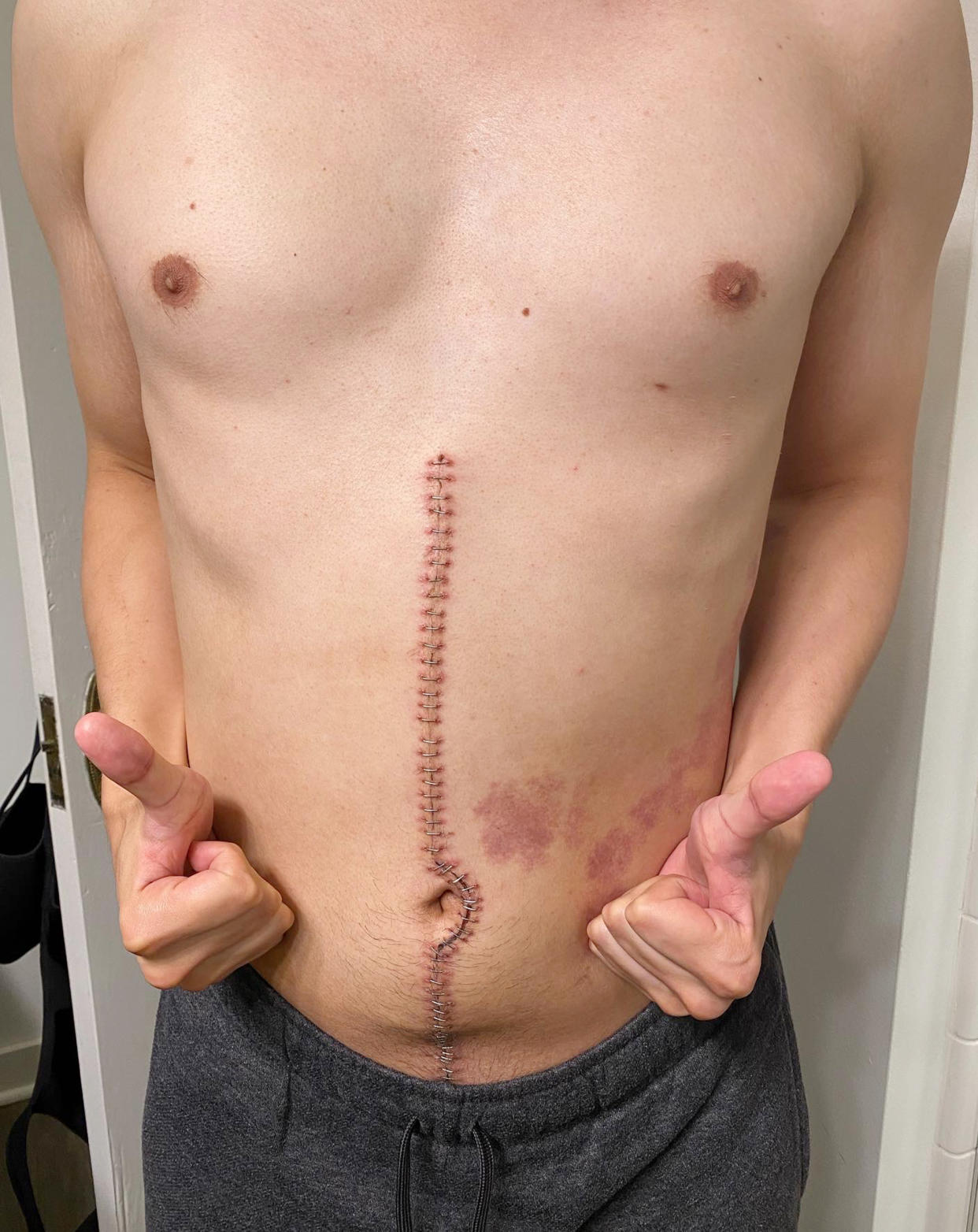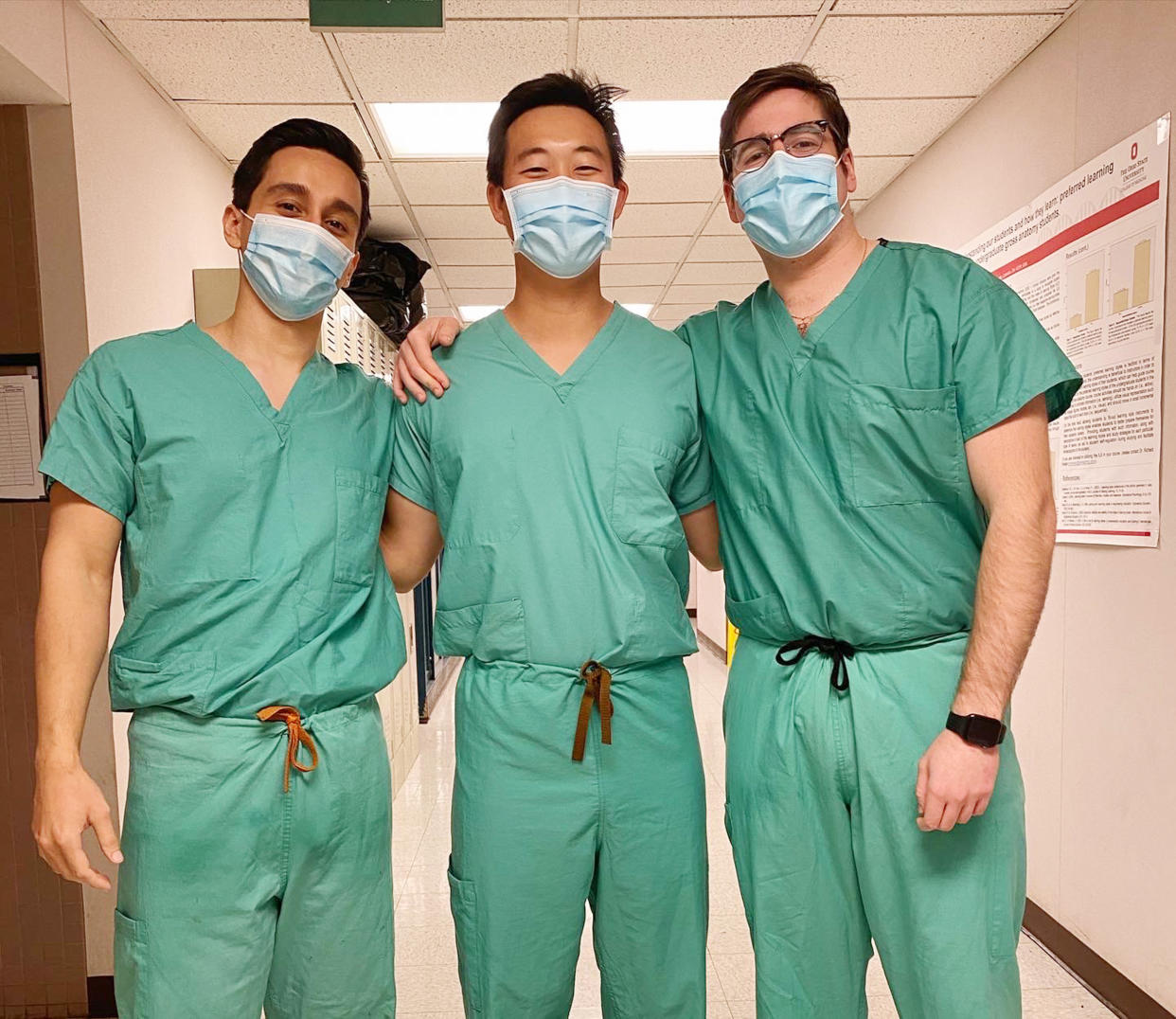Man, 26, with testicular cancer raises awareness of his unusual first symptom
Last year, Sal Gomez noticed he felt pain in his right testicle and lower back. The third-year medical student thought maybe he pulled a muscle while working or exercising. When the pain didn’t go away, he visited his doctor and learned the reason for his ache: He had testicular cancer.
“I was really thinking I hurt myself, and I was super busy with the surgical rotation. It’s like a 5 a.m. to 5 p.m. type of thing,” Gomez, 26, a medical student at The Ohio State College of Medicine, tells TODAY.com. “I was shocked being 25 years old and diagnosed with cancer.”
Gomez is sharing his story to raise awareness of testicular cancer, a rare cancer that impacts mostly teens and young adults.
“We should talk about it more because it’s the most common cancer, although rare, in young men,” he says. “You’re in the prime of your life.”
‘Weird’ pain leads to diagnosis
After 12-hour days in the hospital as a medical student in a surgical rotation and then studying all night, Gomez thought when he first felt the pain in his testicle and back that he had pulled a muscle.

“I wasn’t really sure why it was going on there. I never had anything like that before,” he recalls. “After two weeks, it wasn’t really going away or getting better.” Gomez performed a self-examination on his testicle and didn’t feel any “lumps or bumps,” but he still scheduled an appointment with his primary care physician. “He wasn’t super concerned about what was going on,” Gomez says. “He did order a bunch of labs and an ultrasound.”
Gomez started to feel better, and with his busy schedule, he put off his ultrasound. Based on what he'd learned in medical school, he didn’t think he had the classic signs of testicular cancer.
“When you learn about testicular cancer, you learn symptoms like a lump,” he says. “You really don’t think about cancer being painful. You usually think of a pea-sized lump (on) a testicle that’s not painful but maybe has some kind of enlargement.”
But the pain returned, and by January, he resigned himself to undergoing the ultrasound.
“Pain really shouldn’t be coming and going,” Gomez says. “I did another exam, and at the time, I didn’t feel a lot there.”
But the ultrasound found a mass.
“There are not really many benign tumors in the testicle, and mine looked particularly cancerous,” he says. “I was really surprised.”
Soon after, Gomez met with an oncologist to come up with a treatment plan. Because he had back pain as well, doctors worried the cancer had spread.
“A couple of days later, I got a CT scan of my abdomen and my (pelvis) that revealed what the back pain was,” Gomez says. “I had these very enlarged lymph nodes in my lower back area, up around where my kidneys are.”

The size of his lymph nodes was a worrying discovery because testicular often moves into the kidneys, Gomez says. But fortunately additional scans revealed that it hadn't spread.
About a week later, he had his testicle removed and learned he had stage 2 testicular cancer. He would need chemotherapy.
“I did nine weeks of chemotherapy after having the primary tumor removed. It was pretty brutal,” Gomez says, adding that his treatment often induced nausea.
Follow-up scans revealed that his lymph nodes responded to the chemo somewhat, but they were still enlarged enough that Gomez's doctors believed there could still be cancer. So, they performed a lymph node dissection, an eight-hour procedure to remove them.
“At the end of June, the pathology came back as no viable cancer,” Gomez says.

Testicular cancer
Testicular cancer generally impacts younger people, according to the American Cancer Society.
“It is a top cancer for young men in their teenage years to perhaps their early 30s. So, it’s a big deal for young men,” Dr. J. Paul Monk, a medical oncologist at The Ohio State University Comprehensive Cancer Center, tells TODAY.com. “It’s not a top killer, thankfully, because it’s so well treated.”
People with testicular cancer normally undergo surgery to remove the testicle and then might receive chemotherapy.
“Surgery is the bedrock of testicular cancer treatment,” Monk says. “It really responds so well to chemotherapy in the advanced and early (stages).”
Monk says that if it’s discovered early, some patients do not need chemotherapy or radiation. Doctors remain unsure why it impacts younger people more than older. People who have an undescended testicle at birth might be at an increased risk of developing the testicular cancer, Monk says. The most noticeable symptom is a lump in the testicle, which is why doctors recommend that men become familiar with what’s normal for their bodies.
“We say do a self-testicular exam once a month,” Monk says. “If you notice a mass or something’s wrong, let somebody know because ... earlier rather than later is always good.”

Surgical removal of a testicle affects fertility, and often doctors encourage their patients to preserve sperm in case they face fertility issues later. But there’s good news about testicular cancer.
“We are still very proud that even in the advanced setting, we are anticipating a cure,” Monk says. “It’s one of the brightest spots in oncology because (testicular cancer) went from a mostly deadly disease in advanced settings to a mostly curable disease.”
Cancer and medical school
As a medical student, Gomez had access to medical journals, so he could've taken his research much deeper than the average patient. But he experienced enough anxiety that he tried not to delve too deep into the literature about his cancer and treatment.
“I was trying to limit myself,” he says. “You learn about it and then it’s happening to you. … It’s a really weird experience.”
Recovering from his lymph node surgery came with complications. He started retaining fluid in his abdomen, making it difficult for him to keep food down. They drained multiple liters from his abdomen.
Gomez initially felt better afterward, but two weeks later, he had to return to the hospital because of more fluid.
“I had five liters taken (out), which was a lot,” he says. “That was pretty tough because I wouldn’t really be able to sleep if I had all the fluid in me. I was super nauseous.”
Luckily, the fluid accumulation stopped, and he was slowly able to restart regular activities and even go to the gym. While he receives scans regularly to make sure the cancer doesn’t return, it has a low recurrence rate. He recently got engaged and looks forward to starting his fourth year of medical school, which he had to put off for his treatment.
Gomez says that testicular cancer comes with a stigma and he hopes people feel less ashamed to talk about it.
“I had to tell everybody that I’m going to lose my testicle, and on top of that I think the biggest thing is — and I’m an example of this — men don’t want to go to the doctor,” Gomez says. “If we don’t talk about it, how can we find these really dangerous things?”
This article was originally published on TODAY.com
